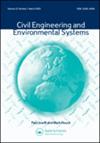Relationships among factors affecting construction safety equipment selection: structural equation modelling approach
IF 1.1
3区 工程技术
Q3 ENGINEERING, CIVIL
引用次数: 3
Abstract
ABSTRACT The construction industry is ranked the first in terms of accidents. Use of appropriate construction safety equipment helps reduce accidents. This study utilises the structural equation modelling to examine relationships among key factors affecting construction safety equipment selection. The approach considers measurement- and structural-models. The measurement-model confirms key factors and their relationships, while the structural-model examines relationships directions. Questionnaire survey is utilised to collect data. Respondents include managers and operators from medium- and large-sized construction companies. Six key factors are confirmed with the measurement-model results, including (1) Safety-related Policy, (2) Equipment Design, (3) Personal, (4) Supplier Agreement, (5) Supplier Support, and (6) Cost Value factors. They relate with employers, employees, and suppliers to select construction safety equipment that match with company’s policy and employees’ need to reduce chances of accidents. The structural-model results reveal directions of relationships among key factors. Safety-related Policy is the most important factor, as it influences other factors. Equipment Design and Personal factors are crucial when selecting construction safety equipment, as they influence Supplier Agreement and Supplier Support factors, which in turn, affect Cost Value factor. Construction companies can utilise the results to understand key factors affecting construction safety equipment selection, and make better decisions.建筑安全设备选择影响因素之间的关系:结构方程建模方法
建筑行业是事故发生率最高的行业。使用适当的建筑安全设备有助于减少事故。本研究利用结构方程模型研究影响建筑安全设备选择的关键因素之间的关系。该方法考虑了测量模型和结构模型。测量模型确定关键因素及其关系,结构模型考察关系方向。采用问卷调查法收集数据。受访者包括大中型建筑公司的经理和经营者。测量模型结果确定了六个关键因素,包括(1)安全相关政策,(2)设备设计,(3)人员,(4)供应商协议,(5)供应商支持和(6)成本价值因素。他们与雇主,员工和供应商联系,选择符合公司政策和员工需要的建筑安全设备,以减少事故发生的机会。结构模型结果揭示了关键因素之间的关系方向。安全相关政策是最重要的因素,因为它影响其他因素。设备设计和个人因素在选择施工安全设备时至关重要,因为它们影响供应商协议和供应商支持因素,而供应商支持因素反过来又影响成本价值因素。建筑公司可以利用结果来了解影响施工安全设备选择的关键因素,并做出更好的决策。
本文章由计算机程序翻译,如有差异,请以英文原文为准。
求助全文
约1分钟内获得全文
求助全文
来源期刊

Civil Engineering and Environmental Systems
工程技术-工程:土木
CiteScore
3.30
自引率
16.70%
发文量
10
审稿时长
>12 weeks
期刊介绍:
Civil Engineering and Environmental Systems is devoted to the advancement of systems thinking and systems techniques throughout systems engineering, environmental engineering decision-making, and engineering management. We do this by publishing the practical applications and developments of "hard" and "soft" systems techniques and thinking.
Submissions that allow for better analysis of civil engineering and environmental systems might look at:
-Civil Engineering optimization
-Risk assessment in engineering
-Civil engineering decision analysis
-System identification in engineering
-Civil engineering numerical simulation
-Uncertainty modelling in engineering
-Qualitative modelling of complex engineering systems
 求助内容:
求助内容: 应助结果提醒方式:
应助结果提醒方式:


